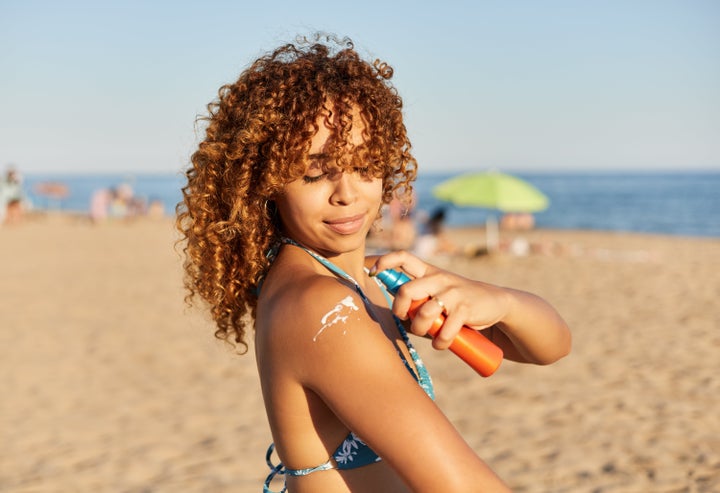
As a nation, we’re not great at sun care. It might be because we spend so much of the year under grey skies, getting soaked to the bone, wading through mud, you get the gist.
However, sun care is essential – even when it’s overcast. UV rays can penetrate clouds so unless you are completely in the shade or indoors, chances are, you should be wearing sun protection.
According to a recent survey of 2,000 people by Parkdean Resorts, 43% of people will only apply sunscreen when temperatures hit between 20 and 25 degrees celsius and 9% will apply sunscreen when they feel their skin burning – by which point it’s pretty much too late! Ahhh!
The NHS states there’s no safe or healthy way to get a tan and having one doesn’t protect you from the sun’s harmful effects. But Parkdean’s study shows 32% have suffered a ‘t-shirt’ tan and 27% have had a flip-flop tan after suffering sunburn.
If you recognise your own attitudes within these stats, please keep in mind that five or more sunburns can put you at a higher risk of melanoma and the time to start applying sunscreen is now.
However, there’s one extra bump in the road here – are you even using the right sunscreen for you?
How to know which sunscreen is right for you
So let’s quickly talk about SPF.
SPF stands for “sun protection factor” and the number next to it pertains to the strength of the sun protection and how well it protects you from getting burned. So if, like me, you’re very pale and burn easily, you might want to stick to higher numbers like 30.
Dermatologist Saira George from the University of Texas says that this isn’t enough, though:
“A high SPF can give people a false sense of security,”
“There are a lot of limitations with SPF numbers. People often mistakenly think they can’t get sunburned or they can be out in the sun for much longer than is safe if they put on SPF 100 sunscreen.”
She adds that “A high SPF doesn’t tell you anything about how much UVA protection you’re getting,” says George.
Broad spectrum sunscreen protects you from UVA as well as UVB rays.
“Choose a sunscreen that’s at least SPF 30, broad spectrum, and water-resistant if you’re swimming or sweating,” George says. “Beyond that, with all the brands and formulations out there, pick whichever one you like that you won’t mind using regularly.”
The dermatologist adds that spray sunscreens can be convenient, but be sure to spray until you see a good sheen evenly across your skin.
Remember that when it comes to sun protection, sunscreen alone isn’t enough.
How to stay protected from the sun
The NHS recommends that you do the following:
- Spend time in the shade between 11am and 3pm
- Never burn
- Cover up with suitable clothing and sunglasses
- Take extra care with children